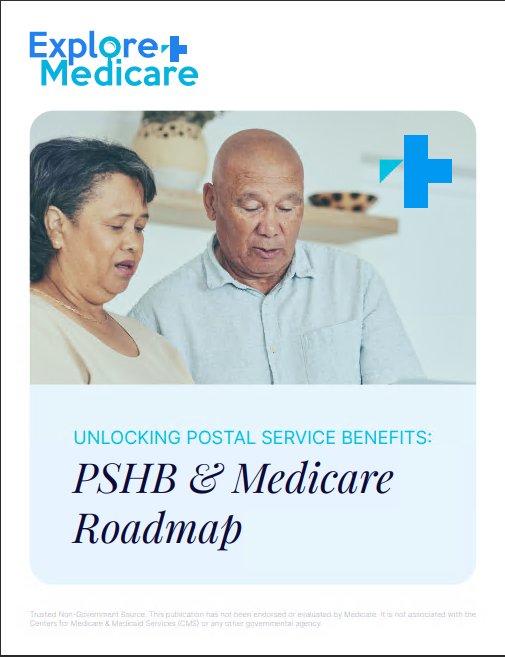Key Takeaways
-
Medicare Part B forms a crucial part of your healthcare coverage, addressing outpatient services and preventive care.
-
Understanding how Part B works, its costs, and enrollment timelines can save you from unnecessary penalties and ensure smooth healthcare access.
Why Medicare Part B Deserves Your Attention
Medicare Part B isn’t just an add-on; it’s an essential component of comprehensive healthcare. While Medicare Part A covers inpatient hospital stays, Part B handles the care you need outside hospital walls. This includes doctor visits, preventive services, and even certain types of medical equipment. By addressing your day-to-day healthcare needs, Part B ensures that you’re not left vulnerable to unexpected costs that can arise from routine or specialized care. Skipping Part B can leave significant gaps in your coverage, which could cost you more in the long run—both financially and health-wise.
Moreover, Part B’s emphasis on preventive care aligns with the goal of maintaining your health rather than reacting to health crises. Whether you’re managing chronic conditions or ensuring regular checkups, Part B is designed to support your long-term wellness.
What Medicare Part B Covers
Medicare Part B’s coverage spans two main areas, each catering to distinct yet equally important healthcare needs:
1. Outpatient Care
This includes services you receive without being admitted to a hospital, such as:
-
Visits to doctors and specialists for consultations, treatments, or second opinions.
-
Diagnostic tests, like X-rays, MRIs, CT scans, and lab work to pinpoint health issues early.
-
Outpatient surgeries and procedures, which often eliminate the need for hospital stays.
These services cover a broad spectrum of medical needs, ensuring you have access to the care you require promptly and effectively.
2. Preventive Services
Part B places a strong focus on prevention. It covers screenings for conditions like diabetes, cancer, and heart disease, vaccinations for flu and pneumonia, and annual wellness visits to help catch health issues early. These services are often provided at no additional cost beyond your monthly premium, making them accessible tools for staying healthy.
Preventive care isn’t just about addressing current concerns; it’s about giving you the peace of mind that comes with early detection and proactive management of potential health risks.
How Much Does Part B Cost?
In 2025, Medicare Part B has a standard monthly premium of $185. Most beneficiaries pay this amount, but higher-income individuals may face an Income-Related Monthly Adjustment Amount (IRMAA). There’s also an annual deductible of $257, which you must meet before Medicare starts covering costs. These costs are structured to make Part B accessible to most beneficiaries while ensuring a shared contribution toward healthcare expenses.
Coinsurance Costs
After meeting the deductible, you typically pay 20% of the Medicare-approved amount for most Part B services. This includes doctor visits, outpatient therapies, and medical equipment. While 20% may seem manageable, these costs can add up quickly, especially for specialized care or extended treatments, making it essential to understand what’s included and what’s not.
Budgeting for these out-of-pocket costs ensures you’re prepared for any surprises, and considering supplemental coverage might help offset some of these expenses.
Enrollment Timelines You Can’t Ignore
Getting the timing right for enrolling in Medicare Part B is critical. Missing deadlines can result in lifelong penalties or delayed coverage, impacting your healthcare access and financial planning.
Initial Enrollment Period (IEP)
You have a seven-month window to enroll in Medicare when you first become eligible. This period includes:
-
Three months before the month you turn 65
-
Your birthday month
-
Three months after your birthday month
Enrolling during this period ensures your coverage begins as soon as possible, avoiding gaps in your healthcare.
Special Enrollment Period (SEP)
If you’re still working and covered by employer insurance at 65, you can delay Part B without penalty. Once that coverage ends, you’ll have an eight-month SEP to sign up. This flexibility is crucial for those transitioning from employer plans to Medicare.
General Enrollment Period (GEP)
If you miss your IEP and don’t qualify for an SEP, you can enroll during the GEP, which runs from January 1 to March 31 each year. Coverage will begin on July 1, but you may face late enrollment penalties. Planning ahead can save you from these unnecessary costs and ensure you have the coverage you need when you need it most.
Avoiding Late Enrollment Penalties
Skipping Part B when you’re first eligible can lead to costly consequences. The penalty adds 10% to your monthly premium for every 12-month period you were eligible but didn’t enroll. This increase stays with you for as long as you have Part B. For example, delaying enrollment by two years could mean a 20% increase in your premium—a permanent addition to your healthcare costs. Planning ahead is the best way to dodge these fees and ensure uninterrupted access to healthcare services.
Coordination with Other Coverage
If you’re already covered by another health plan, such as through an employer or a union, Medicare Part B works as a secondary payer. This means it can pick up costs your primary insurance doesn’t cover, offering an added layer of financial protection. Be sure to check how your plans interact to avoid surprises, and verify whether your existing coverage meets your healthcare needs as you transition to Medicare.
Why Part B Is a Smart Investment
Think of Medicare Part B as a safety net. Healthcare needs don’t stop after hospital stays. Part B ensures you’re covered for ongoing treatments, preventive care, and the unexpected. Beyond the basics, Part B supports your ability to stay proactive about your health:
-
Access to Specialists: Whether it’s a cardiologist, dermatologist, or orthopedist, Part B gives you access to the experts you need.
-
Regular Checkups: Staying ahead of health issues can prevent larger problems down the road, offering you peace of mind.
-
Durable Medical Equipment: Part B helps cover essential equipment like walkers, wheelchairs, and oxygen tanks, improving your quality of life.
This coverage isn’t just about addressing immediate health concerns—it’s about empowering you to manage your health with confidence and ease.
How to Enroll in Medicare Part B
Automatic Enrollment
Some people are enrolled in Part B automatically, such as those already receiving Social Security or Railroad Retirement benefits. You’ll receive your Medicare card in the mail three months before you turn 65, providing a hassle-free start to your coverage.
Manual Enrollment
If you’re not automatically enrolled, you’ll need to sign up through Social Security. This can be done online, over the phone, or at a local office. Be proactive about checking your eligibility and starting the process early to avoid delays.
Enhancing Part B with Supplemental Coverage
Medicare Part B covers a lot but not everything. Supplemental insurance, such as Medigap or employer-provided plans, can help bridge the gaps. These policies typically cover copayments, coinsurance, and other out-of-pocket costs. Exploring these options ensures that your healthcare remains both comprehensive and affordable.
Preparing for Future Costs
Healthcare costs are on the rise, and Medicare Part B premiums and deductibles tend to increase annually. Budgeting for these expenses now can save you stress later. Keep an eye on Medicare’s annual announcements for updates, and consider setting aside funds specifically for healthcare to ensure you’re always prepared.
Wrapping It All Up: Medicare Part B Matters
Medicare Part B plays a vital role in your overall healthcare coverage. From preventive services to outpatient care, it’s designed to meet the needs of today and the challenges of tomorrow. Taking the time to understand its benefits, costs, and enrollment options will help you make the best decisions for your health and finances. With the right preparation, you can enjoy peace of mind knowing you’re fully covered.









